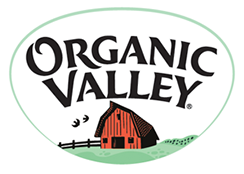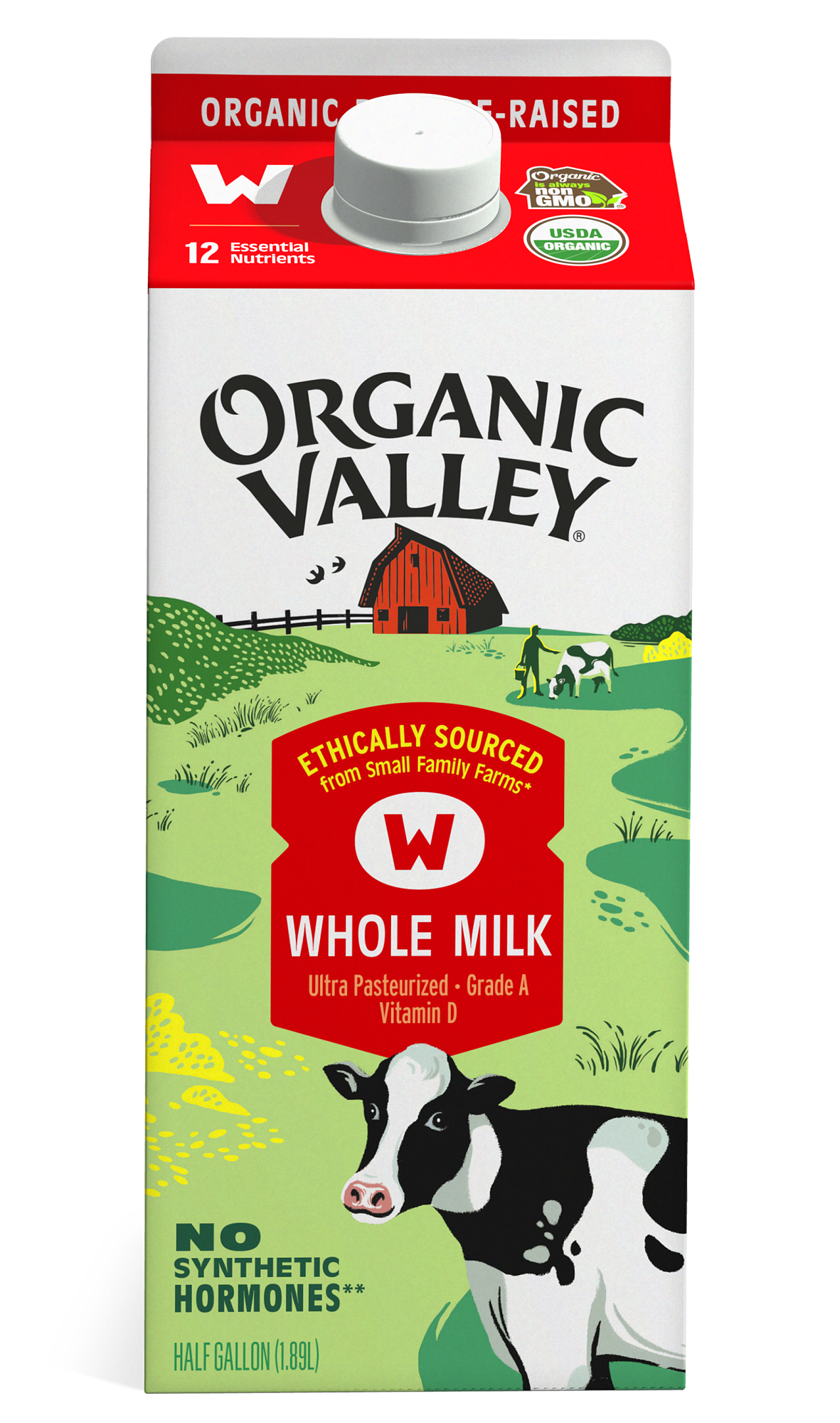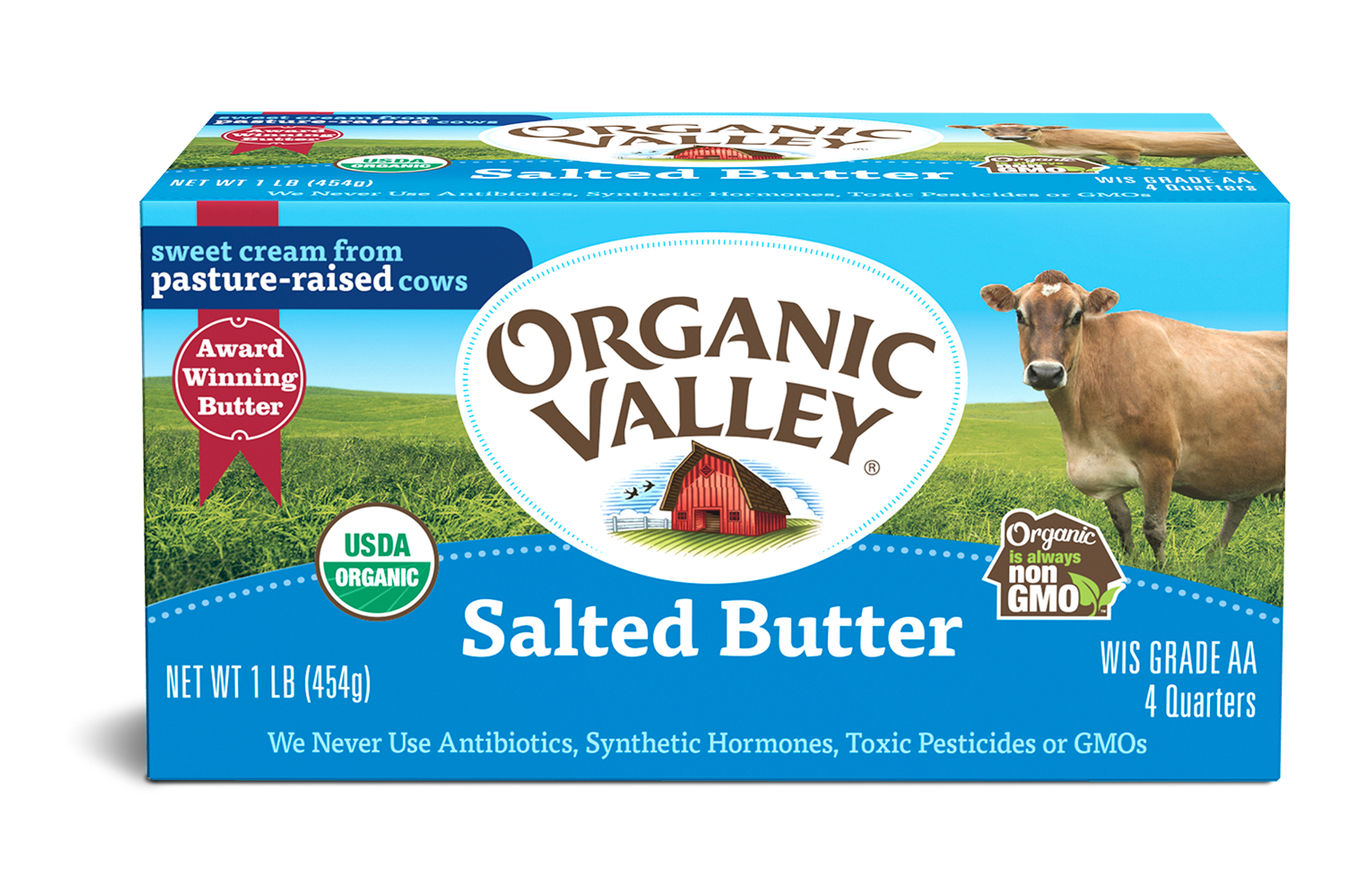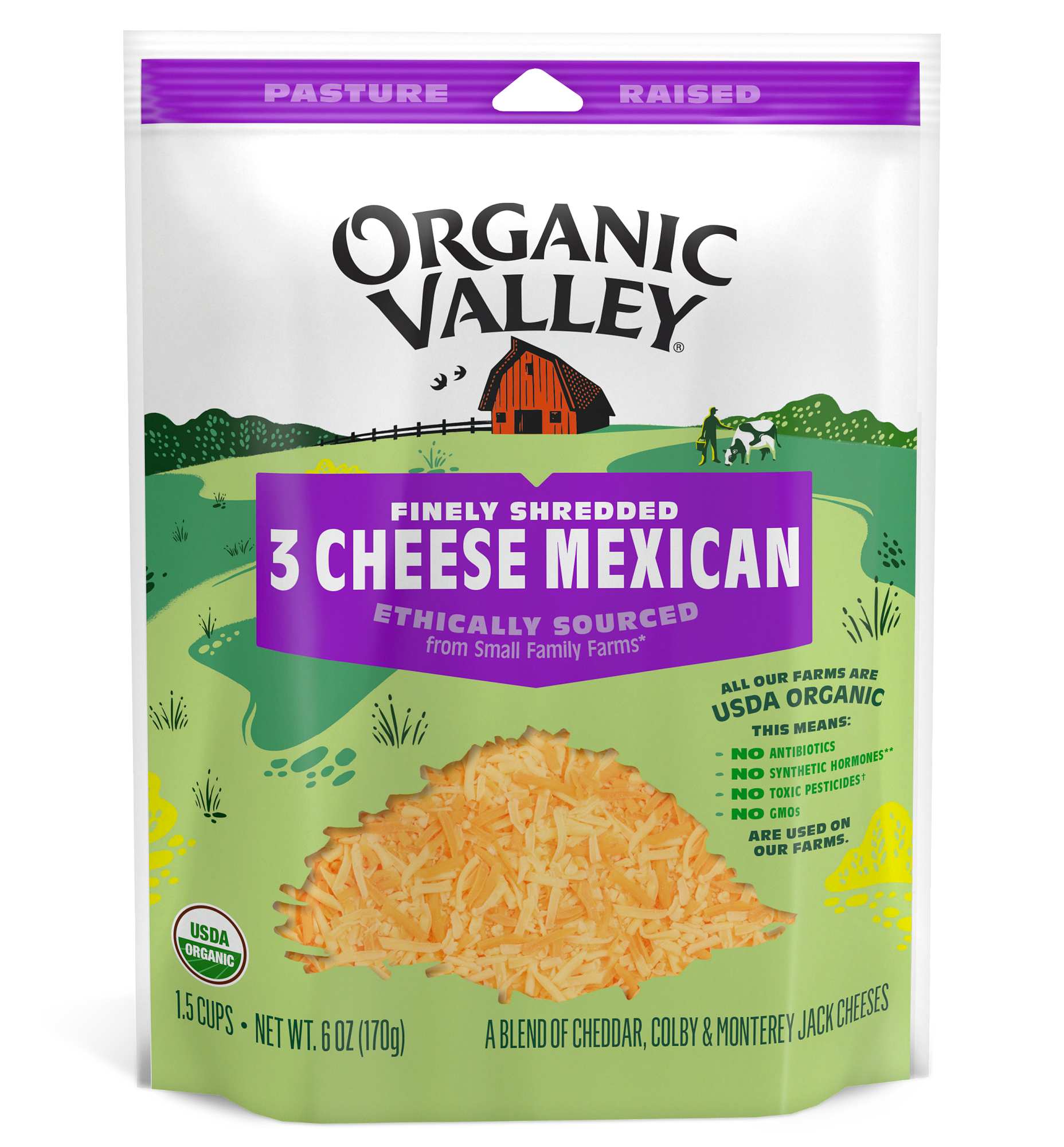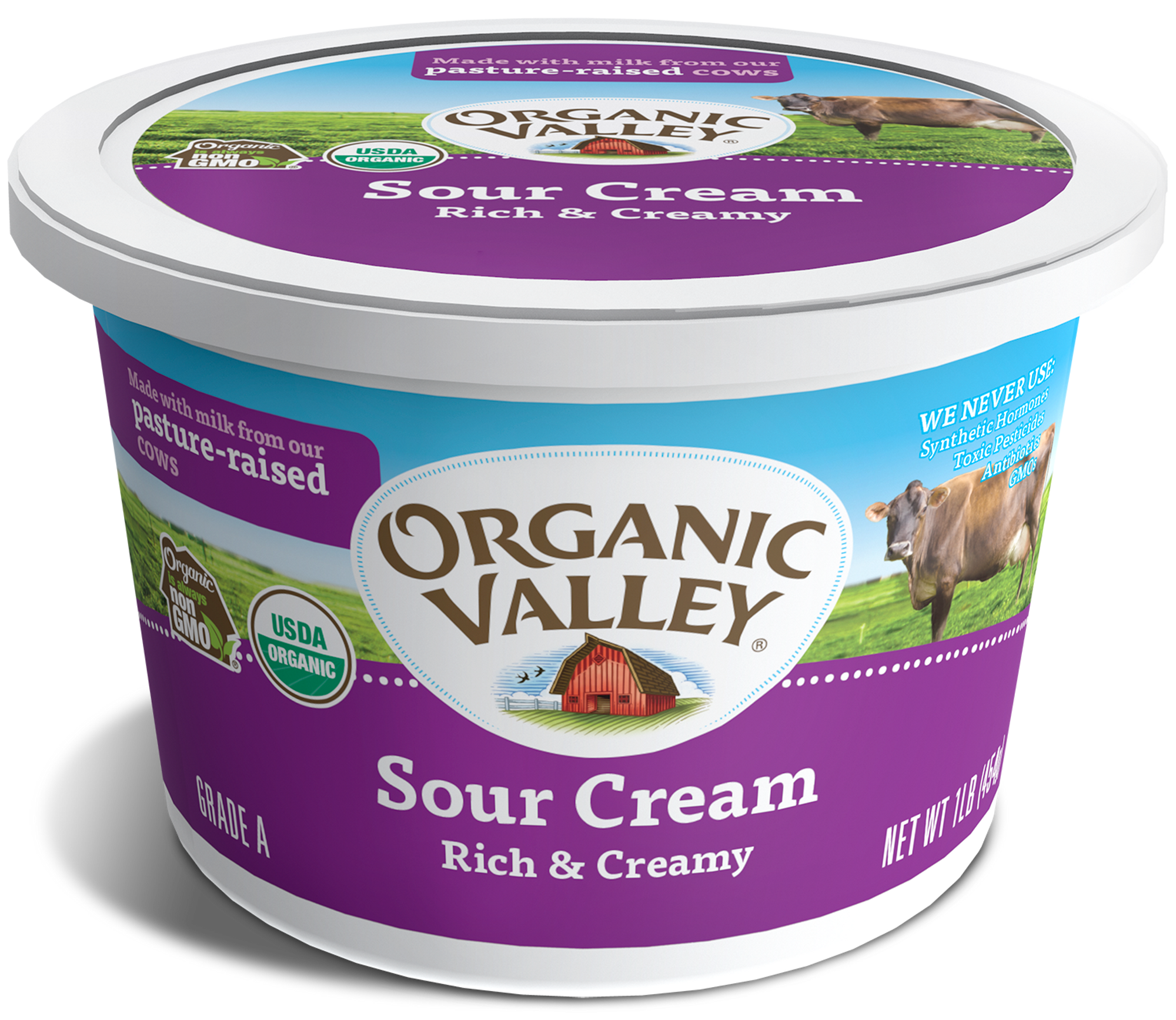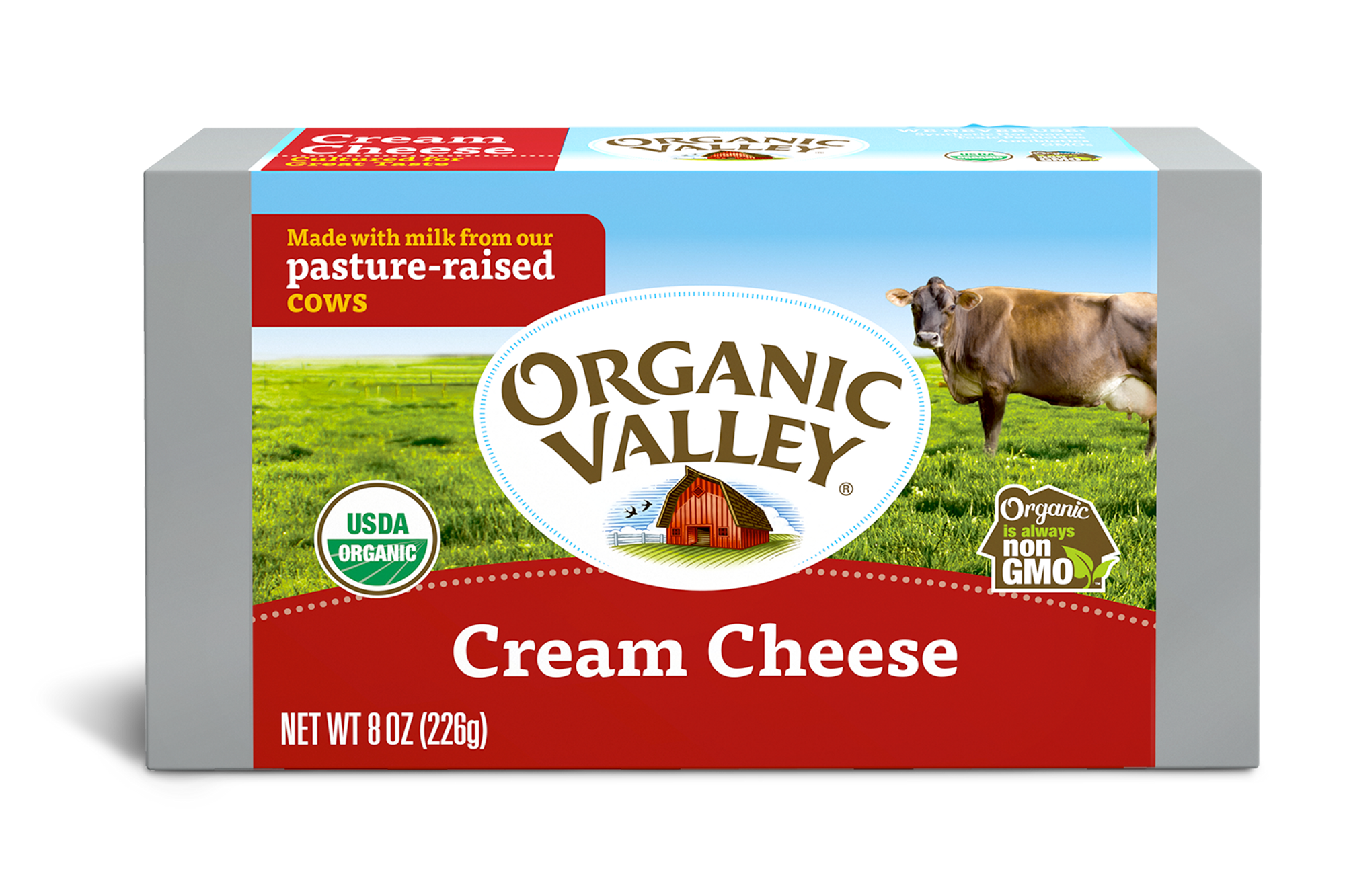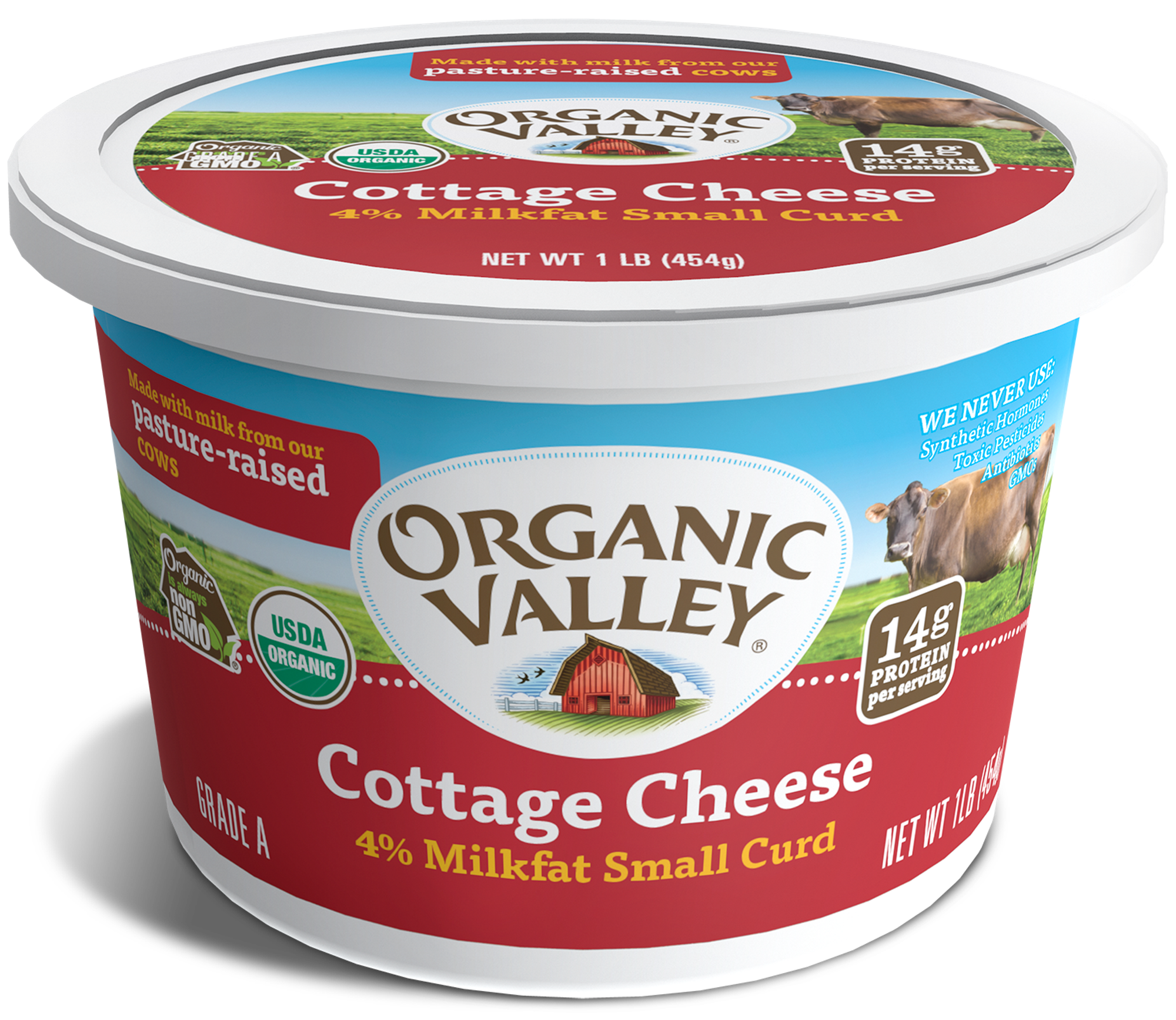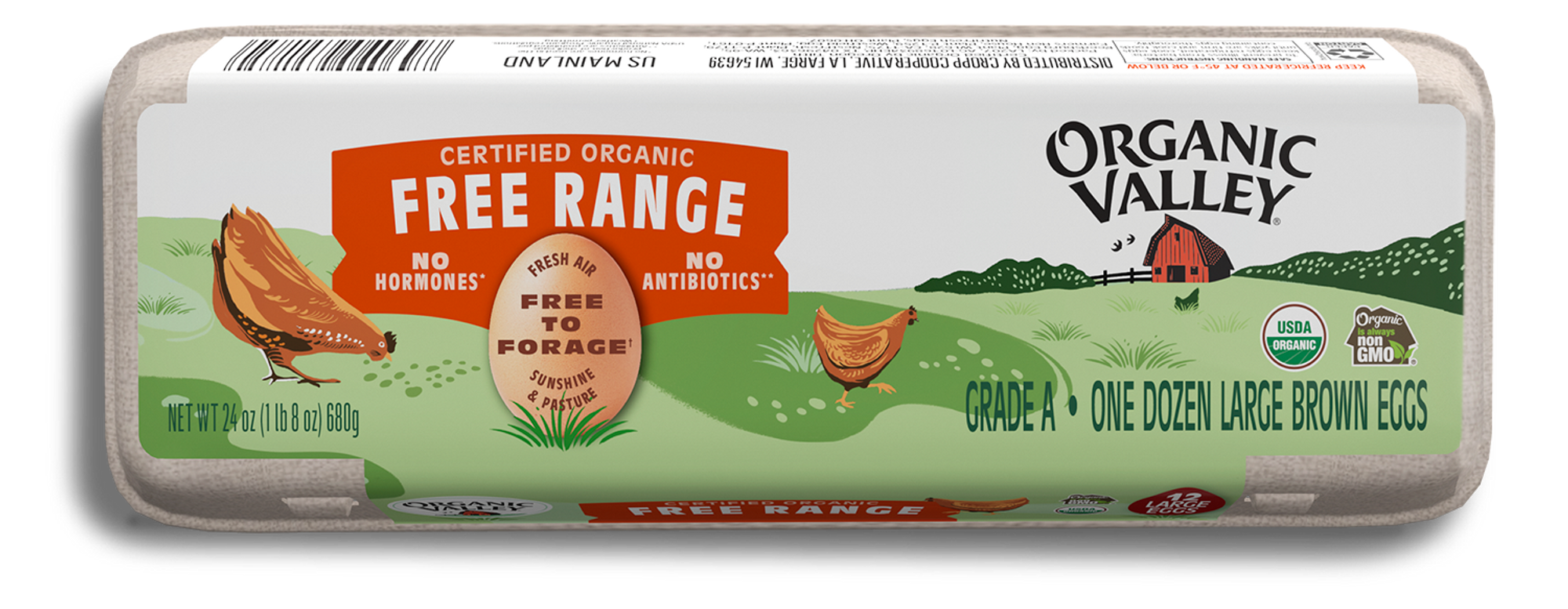
Farming
Dr. Guy Jodarski, Organic Valley Veterinarian
Today on Rootstock Radio, we’re here with Dr. Guy Jodarski, one of Organic Valley’s staff veterinarians who specializes in holistic and organic animal care. He has practiced veterinary medicine for 27 years, and today he has an emphasis on dairy herd health and preventative techniques. He enjoys teaching farmers how to keep their animals healthy without the use of antibiotics, synthetic hormones (of which there are many more than just the famous rBGH!) and other chemicals. We at Organic Valley are proud to have him as a resource serving the cooperative’s 1,800+ farmers through farm visits, educational events, written advice, and more.
In addition to animal care, today we’re speaking with him about two recent studies released by Newcastle University that showed that organic milk and meat contain 50% higher levels of beneficial omega-3 fatty acids thanks to the pasture organic animals graze! It’s exciting research that once again proves organic farming practices are not only better for animals but also for people!

Welcome to Rootstock Radio. Join us as host Theresa Marquez talks to leaders from the Good Food movement about food, farming, and our global future. Rootstock Radio—propagating a healthy planet. Now, here’s host Theresa Marquez.
THERESA MARQUEZ: Hello, Rootstock listeners, and welcome to Rootstock Radio. I’m Theresa Marquez, and I’m here today with Dr. Guy Jodarski, who is a veterinarian and actually works for CROPP Cooperative and mostly works with large animals. It is such a pleasure to have you on our radio, Dr. Guy.
GUY JODARSKI: Hello, Theresa. Nice to be here.
TM: I so admire the kind of work that you’re doing, and have learned so much from you, so it just is seriously a pleasure to be sitting here talking with you. And also getting to learn a little bit more about how it is that people decide to work with animals and choose that as a career. So I’d really love to start out and ask you, I bet all the listeners feel the same way I do, that vets decide they’re vets when they’re little boys—or little girls.
GJ: Well it’s pretty true. You know, my family had a small farm in northern Wisconsin, and that’s where I grew up, and so we always had cattle and other animals like chickens and a few pigs and things like that, and so animals were always part of our life. And we always had dogs and cats too, and so, yeah, the interest in animals was always there. But once we started farming for a while, you know, every once in a while you have a sick cow or something like that, and you have to call a veterinarian. And I was always impressed the way veterinarians handled themselves and how they handled tricky situations. And it was something I thought, “Boy, I’d sure like to do that someday.” And I always liked the animals themselves too, so it just worked out pretty well.
TM: So it is true that a lot of veterinarians, I bet, grow up with animals. I just learned this recently because I was trying to convince a large-animal vet to talk about how to work with cats and dogs, and they went, “Oh no, no, no, I don’t do cats and dogs.” How did you decide large animals were what you were interested in?
GJ: Well, a lot of it was having the cattle themselves, showing cattle at the fair, and then working for dairy farmers. Our farm was more of a hobby farm, but down the road we had a couple of full-time dairy farmers, and I worked for those fellows milking cows and so forth and just really respected what they did, and always thought it would be really something to be able to travel between dairy farms and help the farmers with their cattle.
TM: And I know that you went to UW-Madison and did your studying there. Did you find that a really great experience too?
GM: Well it was, Theresa, because actually Madison, Wisconsin, did not have a veterinary school for many years, and so if somebody was from Wisconsin they would either go to Iowa or Minnesota. And the state actually had contracted some seats in Minnesota, but it was very competitive to get in there. And so it just so happened I was in Madison at the time the new school opened up in 1983 and I got accepted in. And so I was in the first class, and that was a really neat experience because for the first year, we were the only people in the building with the professors. And so it was quite a unique experience because each year another eighty—it was eighty students per year—another eighty people would join us. But we had a lot of opportunities because they started the clinics right away, and so we got to work with the animals right from day one, which most of the students, once they had a full group of students there, then it would be a couple years before you got into the clinical stuff. But we had a really unique experience and it was very positive.
TM: I know now that you’re working with a lot of organic animals, but when you started out working, you started out with conventional animals.
GJ: Well it’s true. And actually, we took four years to get through the school, so we graduated in 1987. I started practice, and for the first twelve years, I practiced in mostly cattle practice, so I had a couple of mixed animal…experience working with dogs and cats a little bit, but over time it got to be pretty much all working with large animals, and then 90 percent of that was dairy cows. And it was conventional, conventional farmers. And of course in 1980, the late ’80s and the ’90s, the bulk of the time that I was in practice, there were a lot more dairy farmers in Wisconsin than there are now. And so we had, the practice I worked in, we would only go out about fifteen or twenty miles in a radius and we had over four hundred dairies that we worked with. So it’s a little bit tragic that we’ve lost so many dairies in the last fifty years or even a hundred years in this age, and so that was part of it.
TM: And just for our listeners out there, you know, at one time Wisconsin was head and shoulders the number one dairy state in the country. Probably by about the ’90s, California became number one and Wisconsin number two. And I think that’s the way it is now isn’t it, Dr. Guy? It’s we’re number two and California’s number one as far as a dairy state.
GJ: That’s true, Theresa. I mean actually, we probably have more farms than they do. But that whole full farm number story is quite a story in itself. And you know, when I was born, there were over a hundred thousand dairy farms in Wisconsin, and when I left high school half of those were gone—there were fifty thousand. Do you have any idea today how many there are in Wisconsin? It’s actually dropped below ten thousand, so in my lifetime, you know, 90 percent of the dairy farms in Wisconsin have disappeared.
TM: Yeah, well I don’t know about Wisconsin, but I know nationwide since 1960, we’ve lost something like 4.3 million family farms. In the ’80s and ’90s, and actually even today, what was wonderful about Wisconsin is that you had a lot of family farmers, and you had a lot of family farmers supporting communities. And even today a lot of our family farmers are still very big graziers. Is that true, Dr. Guy? That they say there’s a lot of pasture, a lot of grazing still going on in Wisconsin.
GJ: Yes, it is true. I mean, we do see a lot of that. And you know I sometimes, when I speak to groups of farmers and there are graziers there who are not organic, I sometimes ask them the question, “Why not? Why aren’t you organic?” Because really, they’re doing most of the things already they need to do to be organic, and really they should just do the little extra steps and get certified and then, you know, it’s just a much better market, sustainable market for the farmers.
TM: Yeah, well definitely a better price. I think that all of us who love farmers out there, whether they’re organic or conventional, probably are paying to see the price of conventional milk drop down to, what is it, $14 a hundredweight now. But is it that low now, Guy?
GJ: I think it’s somewhere in that neighborhood, yes—it’s in the, yeah, the middle teens, yeah.
TM: And I think I’ve read that a farmer, a conventional farmer needs something like $24 to $28 a hundredweight just to break even, so we’ve got some conventional farmers out there really hurting.
I’m really excited to talk about grass with you today, Dr. Guy, because a wonderful study came out this week actually from the Newcastle University in the United Kingdom, and I’m sure you’re familiar with it, the Newcastle study. And I wondered if maybe you could talk with us today and tell our listeners about that study since it was about big animals, meat, and milk.
GJ: Yes, yes. And so this is hot off the press—it just came out this week, actually the sixteenth, two days ago. And it’s a meta study, so a meta study is an interesting type of research, and what they do is they go back and look at other studies, and they compile a large group of studies. And what it allows them to do is to draw out differences more clearly, because as you know, every study is a little bit different and sometimes the results don’t always agree 100 percent because the conditions are a little bit different in each study. So what this allows you to do is look at a broad group of studies, a lot more data, and then draw these conclusions about differences more clearly. And in this study, there was a 196 research papers on milk composition and 67 papers on meat composition. And specifically the thing that really came out, that stood out, were the antioxidants and the fatty acids—that there are big differences between organic and conventional.
TM: And do you, you know, what was the difference?
GJ: So what we saw was about a 50 percent increase in omega-3. Now people may hear, know of omega-6 and omega-3, and there’s a lot of talk about those two fats in the nutrition and health circles. And the thing that’s important to remember is that both omega-6 and omega-3 are required in our diet because we can’t make those and they’re an essential part of the membranes of our cells and all the organs, and so we need to take these fats in.
What has developed over time, especially in the western and American diet, is a little bit of a problem in that, you know, you talked a little bit about consolidation agriculture. Well what that did with a lot of the livestock farming, it meant that the cattle came off of the land, came off of the pastures and they were fed inside, and grain became a bigger part of the diet. And the reason for that is because grain is more energy dense, so you can get higher production, you can grow animals quicker, you can make more milk in a shorter period of time. But there’s a consequence for that, a lot of consequences. And I won’t talk about it as far as the animal health—it does affect their health—but it affects the composition of the product. And this is what we’re really coming to in this study, in this Newcastle study.
And this is also you know, two years ago, the Washington State study, the PLOS ONE study, this is all tying together. And so what it shows is that we have higher omega-3s when we go to grass and forage-based systems. And it makes sense because grain, the seeds, the oils in the seeds, like corn oil, soybean oil, that portion contains a lot of omega-6. And the problem is, with processed foods in the American diet with corn- and soy-based diets, Americans are eating diets that are, the 6-to-3 ratio in the whole diet is 10:1, 20:1, or even higher in some cases. And what we really, what the doctors and the researchers are agreeing on is that we need a 6-to-3, omega-6 to omega-3 ratio in our diet of about 3:1. That’s historically what people had in earlier times, and that would be a healthy diet. And now we’ve gotten it out of whack so we have too much omega-6 and not omega-3. And so that’s kind of a long-winded way of saying it, but this study is showing that we have more of the omega-3, which is what we need, a much healthier ratio of that fat.
(11:49)
TM: In organic milk and grass, I mean, they didn’t actually separate out grass farms, but a lot of conventional farms, especially in the United States, aren’t grass-based, although we are very lucky that in Wisconsin we do have a lot of grass-based farmers. I think that’s correct, isn’t it, Dr. Guy?
GJ: Yes, and so we would expect to see some of those benefits in grazing herds that were not organic. If they were on a high-forage, high-grazing diet, they would have more omega-3 in that diet. And so yeah, you could see it without the organic too—they could see that benefit. It’s all about the forage, it’s about the green pasture, that feed, in contrast to the heavy grain feeding.
TM: I have to ask, I’m wondering if anyone else is thinking, “Gee, why is that?” I think what you did say was that the soy- and corn-based things are really, really high in omega-6, and that the grass is more omega-3, and so that’s kind of why. But what is there about grass that makes good omegas?
GJ: An easy way to think about it would be to think about a plant. You look at a plant, and the green leafy stuff is going to be higher in the omega-3s. When you get to green, of course, that’s the seed, that’s the storage organ to start the plant out again. It’s a whole different part of the plant, and that just tends to be richer in 6. And so it’s just the way it is, that if you have leafy, lush forage, that’s higher in 3, and it doesn’t have the 6 in it. And so that’s kind of the basic difference. I’m sure there’s more detail there, but that’s generally what’s going on.
TM: And I think they used organic in this, I think, just because they were interested in it. But isn’t it because organic, in the organic standards, grazing is required?
GJ: That’s right. You know, the grazing for organic requires a minimum of 30 percent of the diet, and they call it the dry matter intake for the cattle. Thirty percent of the diet has to come directly from pasture during the grazing season, which has to be at least 120 days. In many areas of the country it’s longer than that; it may be 150, 180 days and maybe half the year. And so during that time, the cow has to average 30 percent from the pasture.
TM: And so because of that requirement, that’s probably why organic stands out as having the high omega-3s. And I think for you listeners, and I know probably many of you already know this, we really need omega-3s, as Dr. Guy was saying; our bodies don’t make them. Like there are some other things that we can make, different vitamins and things like that that we need, but omega-3s we can’t make. And they’re absolutely essential for brain development, and so they’re really important for women who are pregnant and for children and infants especially. But they actually, I believe, I’m reading a lot of journals who say that even older people, especially senior citizens, do really well with a good, high omega-3. Where else do you know are good sources of omega-3s? There’s fish, of course.
GJ: Yes, fish oil would be a good one. Flax seed would have some in it too; that’s another supplement, a plant-based supplement that would have more omega-3.
And it’s real important to talk about why that is that omega-3 is healthier: because it’s anti-inflammatory. And so, so many of these chronic diseases, like arthritis and diabetes and things like that, are the result of long-term, chronic inflammation. It’s what’s called the fires within. And so when you damp that fire down, cool it down, that’s what anti-inflammatory things do. And it’s not a medicine—we’re just taking, the food is actually the medicine. And so this omega-3 turns down that inflammation, whereas omega-6 actually turns it up. It’s pro-inflammatory, causes more inflammation. And so part of the reason we see a lot of these chronic diseases in our country is because of this ratio being skewed.
TM: Well, you know, I was interested in this study, so excited about it, because of its health benefits that it pointed out to. I know that they did, what, you said 196 studies for milk and then only 67 for meat. But didn’t the meat studies, weren’t they even more outstanding in the omega-3 quality?
GJ: Just slightly so. You know, they’re both around 50 percent more than conventional. It was actually 47 for the meat and 46 for the milk, so they really were pretty close. There was, I guess, higher iron and something called the pro-inflammatory fats. We talked about omega-6 being that. Evidently there’s other ones that also cause more inflammation. They were almost 20 percent lower in the organic meat.
(16:52)
TM: Very exciting that we can think of the way that we produce our food and treat our animals can result in what could be a higher nutritional profile in those products. So that’s very exciting. But I wondered if you had some thoughts about what you’ve seen out there in the field that makes you feel like you’re not surprised about this study’s results.
GJ: Well, a couple of things. You know, the cattle themselves—being a veterinarian, being a large-animal veterinarian, and working for years in a conventional practice, you know, a lot of the conditions that we were called to treat were highly preventable, and a lot of it related back to the diet and the way the cattle were managed. And so a high-corn diet is very hard on an animal. And the other thing is not getting the cow off of concrete. You know, when they graze, they’re in the pasture, they’re on the softer ground where they’re meant to be. The cow’s hoof isn’t designed to carry as heavy an animal as they are on concrete. And so to keep cows confined and then to put corn in them, which changes their metabolism and actually makes them more acidic in their body, it causes all kinds of lameness problems, and cows that have off-feet problems. And so much of it has to do with the way they’re fed. So just seeing cows on pasture, how much healthier they are, that’s no surprise that it carries through to the milk. You know, it just makes sense.
And you know, the other thing about this is these studies are very exciting, and I’m glad to see this. But the other thing is, you know, if you just look at a lush, green pasture, and you just know that there’s goodness there. And so when an animal—and this is just, maybe it’s just, there’s no scientific proof of this—but obviously there’s a feeling that there’s a very positive thing going on when those animals are out there taking… They’re really, they’re just inhaling it, they’re really enjoying the whole experience. And I think that just carries through in everything.
And I guess the point I wanted to make was, you know, these things that we’re looking at, like the omega fats, are just the tip of the iceberg, because I would say these are markers. These are markers for a healthy diet, because we know there are a lot of compounds in plants, in food. And I think that’s one thing that did come through, was the pigments, in some of the earlier studies with the organic produce. There’s all these, what they call plant secondary metabolites, all these things plants make beyond the proteins and the fats and the sugars, that are like the lycopenes and the anthocyanins and the carotenoids—all those things that make the vegetables colorful, they’re healthy. They’re antioxidants, they do all kinds of good things. And so I think this is really just a start as far as seeing the difference between animals that graze and animals that are in confinement.
TM: Well, that is encouraging, you know, to know that we’re just at the tip of the iceberg and that maybe we’re going to keep learning more and more all the time about not just what makes healthy food for people but, you know, what makes animals healthy. I know a lot of our listeners right now are really concerned about humane animal practices.
So if I could, for just a minute, for those of you who are just tuning in, you are listening to Dr. Guy Jodarski, a veterinarian working with large animals, cows, and talking about a study that he said “hot off the press,” and I think that’s right—I think it just came out two days ago. And it is called the Newcastle Study, which showed that the fatty acid profile of organic milk and meat is very excellent compared to conventional. And what we’re talking about right now is grass. A lot of it is because cows are on grass.
You know, Guy, I saw a video one time where cows were let out in the spring for pasture the first time. I had to laugh out loud—the cows were kicking their feet up and running, and it looked like they were even smiling. Is this something that you’ve seen on the farms? I have to ask you this.
GJ: Yes, certainly, they’re very excited. That’s an expression of joy in that animal. And you know, what often happens is in the spring the cattle are held in areas outside until the grass starts to grow enough. And they will stand and look at that pasture in the distance, and it just seems like they’re just waiting; they’re just watching and waiting for their time to get out, and they will look over the fence and moo. And so they anticipate even, because the ones that have been through it that were out the year before, they remember. You know, it’s too bad that we have winter, because it’d be nice to do this year-round. But we do have that, and so sometimes we have to let the grass grow a little bit. And the cows just seem to anticipate, and when they finally do get that chance, boy, they go. And then the farmers tell me that, “Boy, I can’t get them to eat anything else.” Even if you do feed them grain, they back off on their grain and they won’t eat their corn silage and things, because they just have that luscious grass and that’s what they want.
(22:24)
TM: You know, you did mention that the reason that we went to… Well, there’s probably a lot of reasons why we went to corn and soy supplementation, you might say, or feeding that to animals, because it increased the amount of milk. You’re saying cows who are mostly, who pasture a lot, are you saying that they produce less milk?
GJ: In general that’s true. That’s true. And there are many ways to look at that. Well, the people that really are sophisticated about it are some of the people, like New Zealand and stuff, and they graze. And instead of looking… You know, our country, our dairy industry really likes to look at how many pounds of milk a cow produces a day, or how many gallons it produces a day. And what we really need to look at is the solids, because the fat and the protein are the important things, since we make butter and cheese out of.
And so some of, like the New Zealanders, they actually try to figure out how much solids they’re producing per acre of land, and not per cow. Because if you put a smaller cow out there, a Jersey cow, for instance, she may not make as much milk, but you can put more of them out there because they don’t, they’re not as big, they don’t take up as much space, they don’t eat as much feed. And so I’ve had farmers tell me, that made the switch from the bigger Holsteins to the smaller Jerseys, that they actually can stock more on their ground, and so they actually can produce more of solids per acre of land. And so that’s just a different way of looking at things.
TM: I know, in the early days of America, I mean, Thomas Jefferson was a farmer, and we really had a very high, high respect for farmers. Farmers were thought of like doctors and lawyers; they were very, very well, highly respected. And somehow our perception of farmers isn’t the same. But then we went from a lot of grass-based farming to then confinement farming, and now we’re seeing a move back to pasture and grazing. Are you seeing that, Dr. Guy?
GJ: Yeah, and I’m going to diverge just a second here, Theresa, because you got me excited talking about Thomas Jefferson. One of the most exciting things that I’ve done in the last few years is to go to Mount Vernon and see George Washington’s farm. And George Washington, the father of our country, you know, the general in the revolution, all the things that he accomplished, he said that the most important thing he wanted people to remember about him was that he was a farmer. And when you go to his farm, they have done a great job of preserving it, and he grazed cattle and he rotated crops. He was an organic farmer. And it’s so interesting, because he had a seven-year crop rotation. He only took cash crops three of those years. The other years he built the soil; he grew clover and plowed it in; he grazed animals. It is just amazing. And so that’s very exciting.
But you’re exactly right. You know, we’re coming back to it, and I’d say a couple of examples I could tell you. The universities here, you know, you mentioned Wisconsin being such a strong dairy state, and Minnesota also is. And our universities have very strong dairy programs in both states. They have followed the conventional industry in getting bigger research herds, more confinement-style barns, and they went to raising all the young stock inside. In the last ten years, they’ve started putting their heifers, the calves that are going to turn into cows, on pasture, and they bring them back to these more modern confinement-style research barns. And amazingly, they’re learning that these animals that were on pasture actually produce more milk. Even with the same management system, the same feed, and everything, they produce more milk, and they’re healthier. They have less problems, they have less problems having their calves because they’ve had exercise running around the pastures. And it’s really funny to see the universities, who we think of as being pretty advanced in dairy, kind of scratching their heads and going, “Wow, you know, this pasture, there really is something about it. It does… The animals are healthier.” And they’re kind of surprised, and it is kind of funny.
TM: We’re kind of running out of time here, Guy, but I really have to ask you one more question. You know, I’m a meat eater, I like to eat meat; I don’t eat a lot of it, and I believe that meat is very healthy and that we should eat it judiciously. What do you think about this idea of meat? Should we be giving up more? Should we be thinking more about how we eat it? How would you answer that, the kind of role that perhaps animals or meat might have in our lives?
GJ: It’s a great question. And so, you know, I’d just, to start with, I’ll say I share a lot of your feelings. I’m kind of an omnivore, but maybe better an obligate carnivore. I do love meat, but I do like to, like you say, eat it judiciously. If you look at some of the way the Asians cook with stir-fries and things, and using meat in flavor, you don’t have eat such big portions. You know, a portion of meat is four ounces. That’s the size of a deck of playing cards. So it’s not the idea of eating a steak the size of your plate. Meat, I think, is a very… We know it’s nutritious, it’s nutritionally dense, and so people that need a lot of nutrition, people that are growing, women that are pregnant or nursing, there’s a lot of protein and minerals and things that you’re just going to get. It’s so nutrient dense, and so meat is a good part of the diet.
Now the question is, what about the sake of the animals and the sake of the earth? And one of the things is a lot of the land is not suited to grow crops in the world. And so there’s a lot of places where animals can graze and we can use that animal for meat; we could never grow food there for people in those places. And so a lot of the earth is that way. And so we have to be humane about it; we have to give a good life to these animals. And then of course the whole process of harvesting the meat has to be totally humane. But I think meat really does have a place.
TM: For listeners, we are talking with Dr. Guy Jodarski, who is an organic veterinarian. Dr. Guy, thank you so much for your insights and for your lessons on agriculture and big animals and livestock. And it’s been just an honor to have you on the show.
GJ: You’re welcome, Theresa. Thank you so much for having me.
You can listen to Rootstock Radio on the go at iTunes and Stitcher, and find us online at rootstock.coop/radio. Rootstock Radio is brought to you by Organic Valley Family of Farms.
